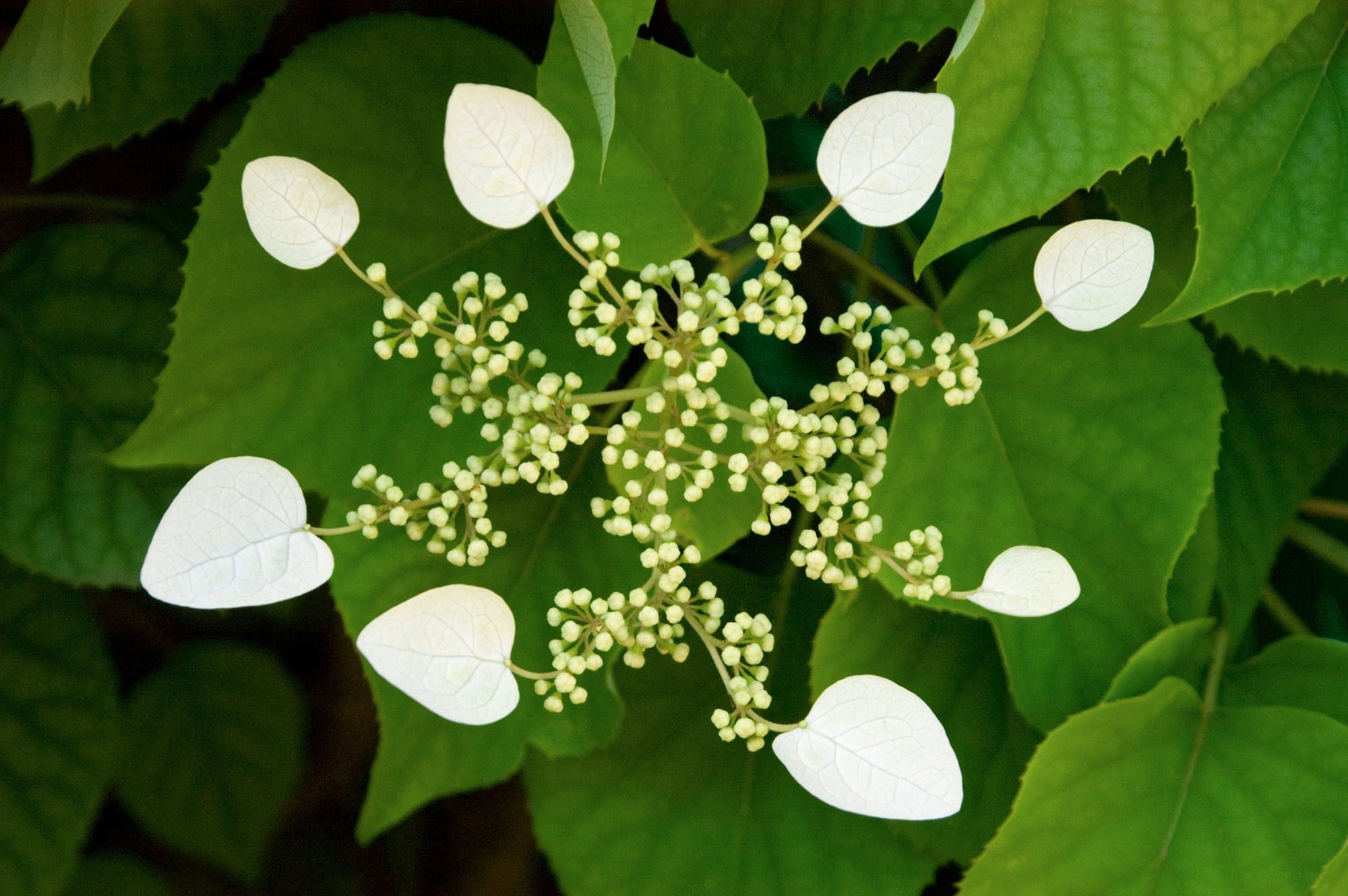- © 2026 Annapolis Home Magazine
- All Rights Reserved
By Kymberly Taylor

Whether big or small, our gardens are miniature worlds; within each plant is a natural force. Observe the delicate surge of the bluebell, the canna lily’s sky-ward rush, the calm hosta. As gardeners, our tasks are to cultivate and manage these bright energies for aesthetic and practical purposes. Have a tough spot to cover? A bare fence? A brick wall? If so, you may harness the magnificent strength and beauty of the Japanese climbing hydrangea, Hydrangea anomala petiolaris. This summer-blooming perennial is one of nature’s most powerful vines, adhering to almost every surface, reaching 30 to 50 feet high and 5 to 6 feet wide. Native to Japan and Southeast Asia, this Japanese climber is not well known in America but is common in the deep forests of Japan. Though a non-native plant, it does quite well in Annapolis, Maryland’s Zone 7-b, distinguished by hot, humid summers, cool winters, and lots of rain.
Keep in mind that when young, Hydrangea anomala needs a lot of care. Plant in rich, slightly acidic soil in a partly shady spot. Talk to it, water it, and dose twice a year with a little Mir-acid. You won’t notice much at first. However, after three to five years, it will take over and almost become a living dream, slowly enchanting your backyard as it grows imperceptibly year after year. Covering almost half of my 30-foot privacy fence, its large leaves and huge lace-cap flowers have become a verdant bower. Recently, I looked behind the leaves to find an astonishing ecosystem humming with life. Two wrens resting in its shade took flight. A matrix of aerial roots, some the size of human arms, seemed to have a will of their own. They spread horizontally and vertically simultaneously, climbing up and over my fence and blooming on the other side.
The Japanese hydrangea blooms from early to mid-summer and has brilliant yellow foliage in the fall. Plant this slow-growing beauty in dappled shade and take pleasure as the forces within mature. Toast in honor of Chronus, the Greek god of cyclical time. However, be wary of his trickery. Before you know it, your friendly little hydrangea will become a gentle giant.

Hydrangea fossils date back 40-65 million years. Derived from the Greek, ‘hydrangea’ means ‘water vessel,’ which references the shape of its seed capsules.
© Annapolis Home Magazine
Vol. 15, No. 4 2024